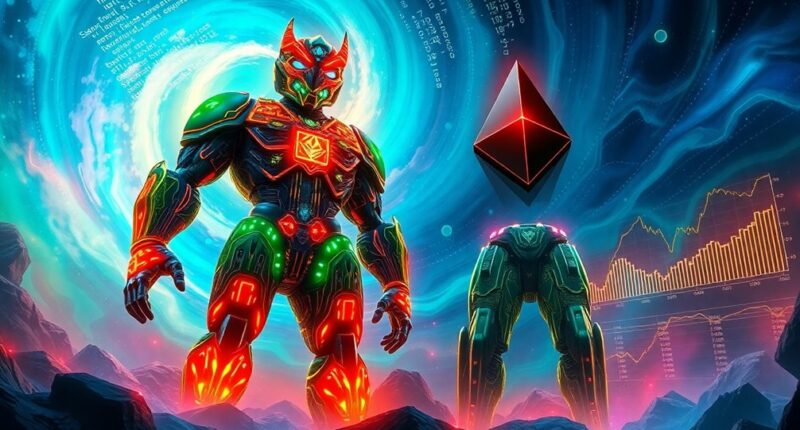As we near 2025, the rivalry between Solana and Ethereum is heating up. Both platforms offer distinct advantages, with Solana's rapid transactions and low fees appealing to gamers and NFT enthusiasts, while Ethereum boasts a strong developer community and a rich ecosystem of decentralized applications. With significant upgrades on the horizon, the outcome of this competition could redefine blockchain technology. So, which platform will ultimately take the lead?

As the blockchain landscape evolves, the battle between Solana and Ethereum intensifies, each vying for dominance in scalability, performance, and adoption. You might be aware that Solana processes an astonishing 65,000 transactions per second (TPS), far exceeding Ethereum's 15-30 TPS. This immense speed allows Solana to handle high demand without the congestion issues that frequently plague Ethereum.
While Ethereum is gearing up for its transition to Ethereum 2.0 to improve scalability, Solana's architecture already supports higher speeds. With the upcoming Firedancer upgrade promising even faster transactions, it's clear that Solana is focused on maintaining its lead in this area.
When it comes to economic and financial aspects, you'll find that Solana's transaction fees are significantly lower, often less than a cent, in stark contrast to Ethereum's variable and often high gas fees. Despite Ethereum's much larger market capitalization of around $360 billion compared to Solana's $60 billion, Solana has been outperforming Ethereum in critical growth metrics, including daily active users and transactions.
While both networks offer staking options, Solana's inflationary token supply could impact its long-term value, raising questions about sustainability. Ethereum's gas fees have historically been high, leading some users to seek alternatives like Solana for cost-effective transactions.
In terms of ecosystem and adoption, Ethereum continues to host thousands of decentralized applications (dApps), particularly in finance, while Solana is carving out its niche in gaming and NFTs. Although Ethereum remains the dominant platform for NFTs, Solana has been gaining traction due to its speed and low fees, attracting a growing user base.
You'll notice that Ethereum boasts a well-established developer community, but Solana is appealing to developers seeking faster, more affordable solutions. Institutional support heavily favors Ethereum, providing it with a mature ecosystem, but Solana is rapidly increasing its adoption metrics.
Technologically, there are notable differences between the two platforms. Ethereum employs a Proof of Stake (PoS) consensus mechanism, while Solana uses a combination of Proof of History (PoH) and PoS, resulting in quicker transaction validation.
Both networks offer robust security features, but you might observe that Solana has faced network outages in the past, although it's actively working to enhance stability. Moreover, Ethereum supports programming languages like Solidity and Vyper, whereas Solana uses Rust, attracting developers with varied skill sets.
Looking ahead, the competition between Solana and Ethereum is bound to escalate. As both platforms strive to enhance their capabilities, the outcomes of their respective upgrades and community engagement will significantly influence their future.
If you're considering investing or developing on either network, keeping an eye on their innovations and market performance will be crucial. The battle between Solana and Ethereum isn't just a technical showdown; it's a race that could redefine how we interact with blockchain technology in the years to come.









